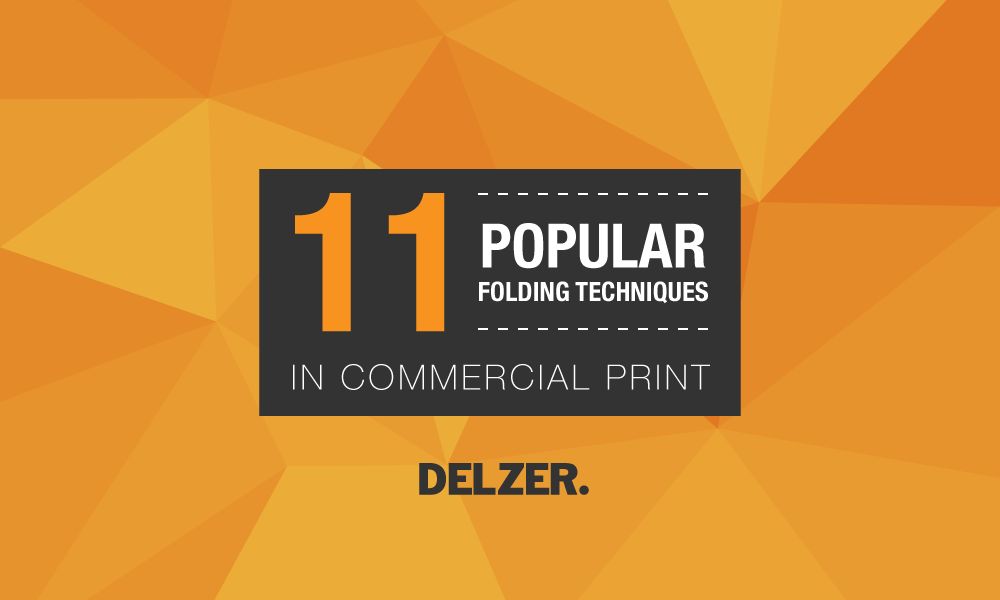11
Popular Folding Techniques in Commercial Print
Print folding techniques used in materials such as brochures do a number of things with their audience:
Grab Attention
Engage in Content
Lead in Sequenced Order
By allowing designers to physically segment content into sections, viewers can quickly understand the conveyed message in the intended order.
Here are 11 popular folding techniques used often in commercial print.
Before we begin: A quick, teachable print + finishing moment
In the print world, the anatomy of a sheet of paper is made up of two pages: a front page and back page. Therefore, when it comes to brochures, each folded section contains two panels: a front panel and a back panel.
– – – – – Basic Folds – – – – –

4-panel single fold
Arguably the most basic of the folds – hello, childhood memories creating homemade cards – the 4-panel single fold can be creased along portrait or landscape orientation. (Or, hotdog or hamburger style for all you kids at heart.)

6-panel letter tri-fold
Usually simply referred to as a letter fold, two parallel folds lay on top of one another, allowing for 6 panels of content. Many a brochure has been created with this technique.
– – – – – barrel Folds – – – – –
8-panel barrel fold
Building on the 6-panel letter tri-fold above, this folding technique requires a bit more paper length with one additional fold. This tucks neatly into itself beneath the third panel. It is also referred to as an 8-panel roll fold.

12-panel barrel fold
This dizzying doozie of a folding technique is basically two 6-panel tri-folds combined. It is also referred to as a 12-panel roll fold and works best with design that doesn’t require lengthy headliners or wide graphics (unless they can stretch into the adjacent panel).

– – – – – Accordion Folds – – – – –

6-panel accordion fold
Also known as a “Z” fold, this technique uses a similar structure as the basic tri-fold – but with a different order of panel content.

8-panel accordion fold
This fold is also known as a “W” fold. A “www.” website call-to-action would be especially fitting for this design.

10-panel accordion fold
There is no alphabetical character equivalent for this folding technique in the english language, but that doesn’t mean it isn’t still a solid option. It’s useful if you want to section off content further than the 6- or 8-panel accordion folds allow.
– – – – – Gate Folds – – – – –
6-panel Gate fold
A doorway to content, the gate fold invites viewers to open up two adjacent panels to view interior information. It is often used for invitations as well as brochures.

8-panel Gate fold
A more complex variation of the 6-panel gate fold, the 8-panel gate fold allows for a double fold in the center. You may also have heard it referred to as a double gate fold or a closed gate fold.

– – – – – Additional Folds – – – – –

8-panel Double Parallel fold
These are two parallel folds nestled together. Great for confusing your audience as they try to fold it back together.

8-panel French fold
Also known as a double fold, this method folds a page both vertically and horizontally, creating a “four-page” feel to a brochure. This is a great folding technique to reveal a full-page design spread.


